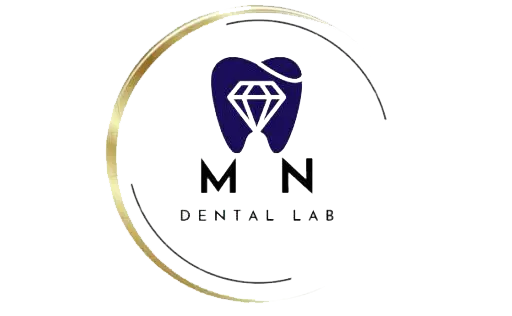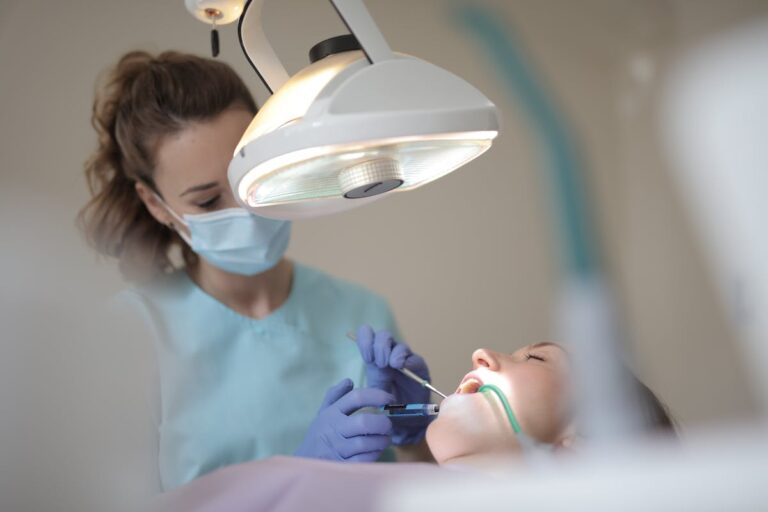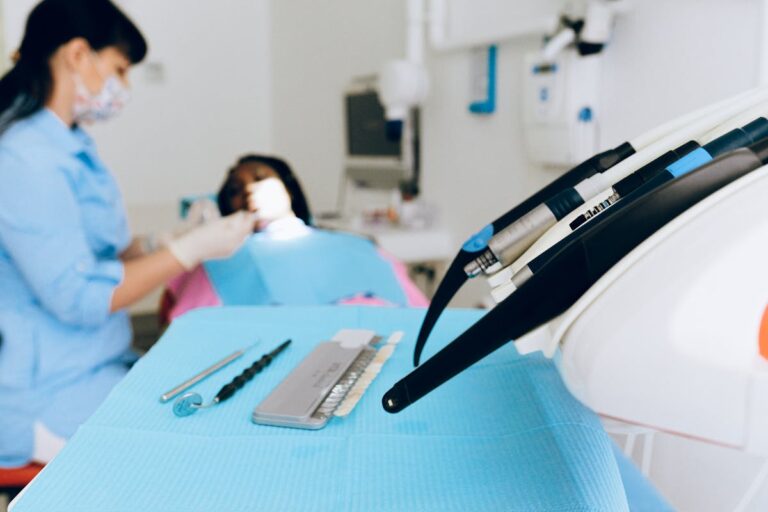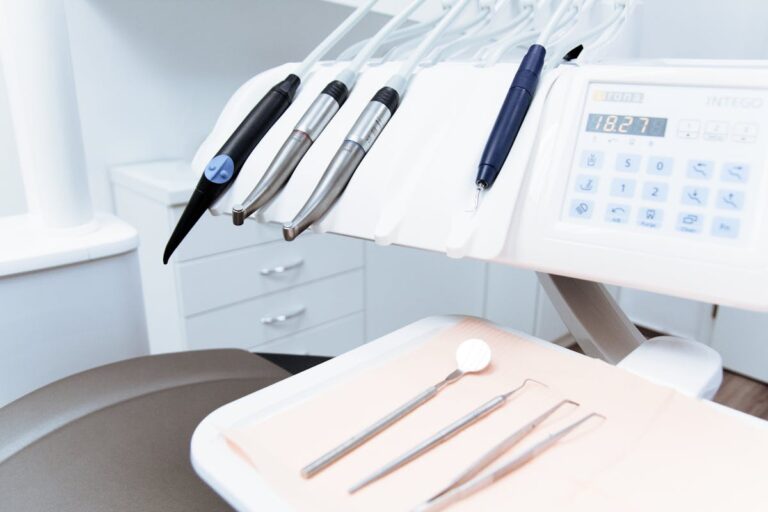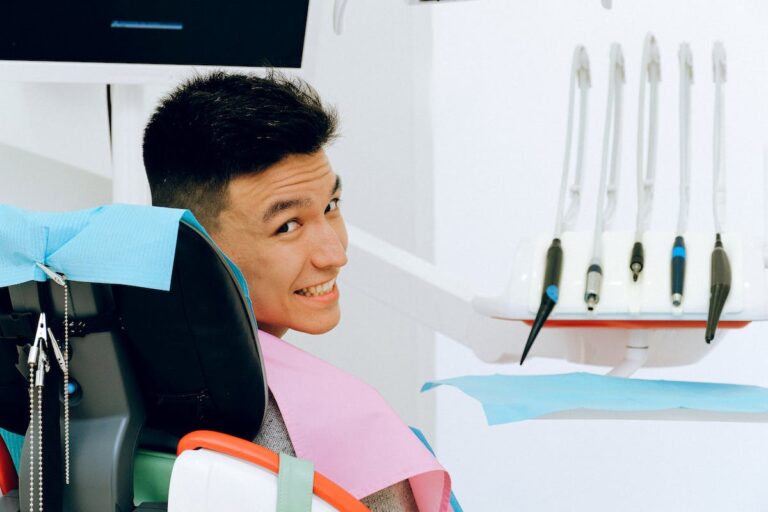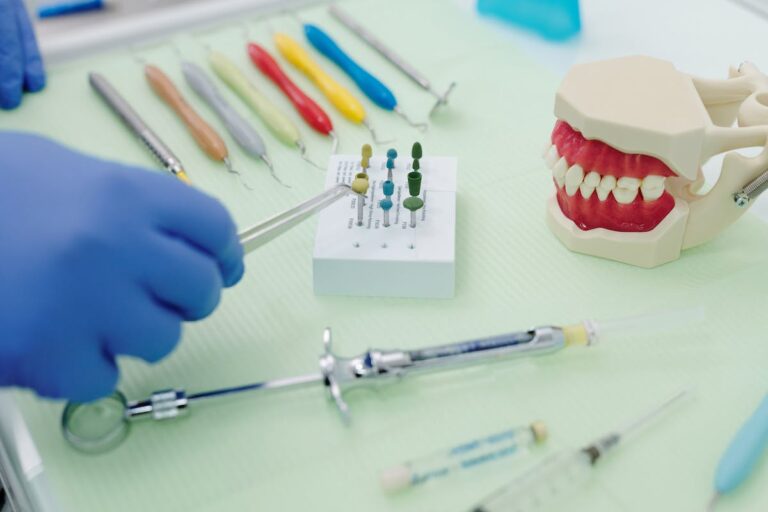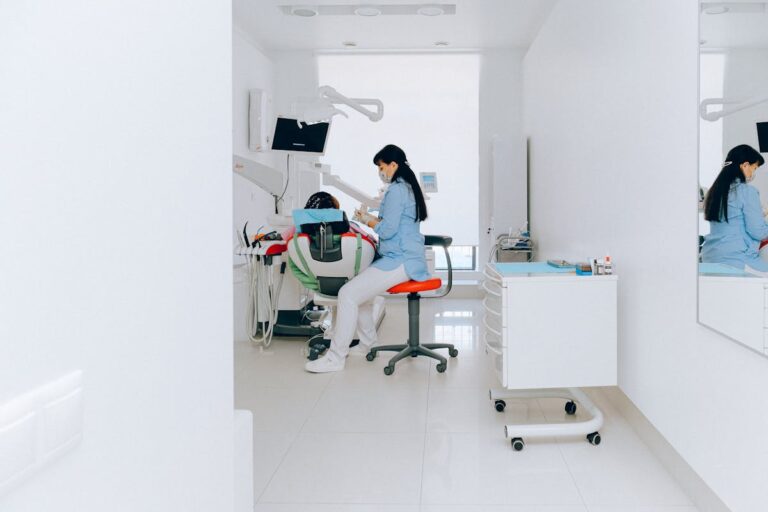Recent advancements in dental technology, like AI-powered diagnostics, 3D printed implants, robotic surgery, and biocompatible materials for fillings, are transforming dental care by enhancing treatment precision, efficiency, and patient comfort. These innovations, shaping both the practitioner’s work and patient experience, demand scrutiny in the context of their impact on the dental care landscape. Optimized for machine learning, semantic search engines, and NLP, this brief encapsulates the evolving dynamics of dental technology while maintaining clarity and context.
AI-Powered Diagnostics
AI diagnostics enhance dentistry by increasing disease detection accuracy and treatment planning efficiency through machine learning algorithms. These algorithms analyze dental images, identify patterns beyond human detection, improve diagnostic precision, and reduce analysis time. This efficiency allows dentists to provide timely and personalized treatment.
Nevertheless, digitizing patient dental records for AI processing raises data privacy issues. Ensuring this sensitive data’s security is vital to retain patient trust and meet regulatory standards. Additionally, AI reliance in diagnostics stirs concerns over diminishing human control. It’s essential to balance AI use, supplementing rather than replacing dental professionals’ expertise, safeguarding patient care quality.
3D Printed Dental Implants
3D printed dental implants, a breakthrough in restorative dentistry, offer precise, customizable tooth replacement solutions. These implants, leveraging digital design and 3D printing, are tailored to a patient’s anatomy, enhancing fit and comfort. Material customization, a core benefit, allows for biocompatible materials to mimic dental tissues. This innovation enhances aesthetic and functional outcomes and may reduce implant rejection risk.
However, integrating 3D printed dental implants into mainstream dentistry faces challenges. Regulatory hurdles, particularly establishing safety and efficacy standards, are significant. Regulatory bodies must ensure each unique implant meets health and safety criteria amid the complexities of material customization. The rapid progress of 3D printing technology further complicates this, often outpacing regulatory framework development. Despite these challenges, 3D printed dental implants hold immense potential to revolutionize restorative dentistry, pointing towards a future of personalized dental care.
Revolutionary Braces Technology
Smart braces technology revolutionizes orthodontic treatment, enhancing patient comfort and treatment efficiency. Pain reduction innovations decrease discomfort during adjustments. Integration of real-time monitoring technologies allows precise tracking of treatment progress by patients and orthodontists, ensuring optimal outcomes.
Smart Braces Evolution
“Smart braces technology” revolutionizes “orthodontic care” by enhancing precision and efficiency in “teeth alignment”. This technology integrates “wearable technology” and utilizes “orthodontic gamification” for improved patient outcomes. The key features include:
- “Real-time Adjustment Monitoring”: In-built sensors in braces provide continuous feedback for instant micro-adjustments.
- “Wearable Technology Integration”: Smart braces connect with mobile devices, providing progress insights.
- “Orthodontic Gamification”: Apps convert regular adjustments into motivating challenges, encouraging treatment plan adherence.
- “Data-Driven Personalization”: AI algorithms utilize collected data for customizing treatments, optimizing alignment strategies, and minimizing treatment duration.
This synergy marks significant progress in “orthodontic treatment” methodologies.
Pain Reduction Techniques
Smart brace advancements foster pain reduction techniques in orthodontic treatment. Researchers use topical anesthetics for immediate relief, applying numbing agents to gums, reducing pain without systemic effects. Acupuncture analgesia, an ancient technique, targets specific points, releases endorphins, and mitigates pain. These methods enhance patient comfort, offer holistic alternatives, and improve the orthodontic experience.
Real-Time Progress Monitoring
Orthodontic advancements now support real-time dental alignment monitoring, improving treatment efficacy and personalization. This progress hinges on:
- Wearable sensors in orthodontic devices for constant monitoring.
- Patient apps for instant feedback and visual tracking.
- Advanced analytics for treatment adjustment based on real-time data.
- Automated alerts for necessary adjustments or issues.
These elements optimize treatment and enhance patient involvement. The blend of wearable tech and patient-focused apps signifies a key evolution towards dynamic, responsive, and successful orthodontic treatments.
Laser Dentistry Advancements
Laser dentistry advancements enhance precision and patient comfort in dental procedures. Progress is significant in laser safety and treatment speed, revolutionizing traditional methods. Modern lasers ensure safer environments with minimized tissue damage risk for patients and professionals. Reduced adverse effects make laser applications in dentistry more reliable.
Increased treatment speed marks laser dentistry evolution. Lasers streamline procedures, increasing efficiency, and reducing patient chair time. Improved workflow benefits dental offices. Laser precision enables targeted treatment, minimizes surrounding tissue damage, and accelerates recovery.
Teledentistry’s Rise
Teledentistry’s rise, a parallel evolution to laser dentistry advancements, broadens dental care access beyond conventional office visits. Key aspects facilitating its growth include:
- Remote Consultations: Video conferencing enables remote dental consultations, overcoming geographical restrictions, extending dental care reach to remote, underserved areas.
- Digital Record Sharing: Digital images and patient records sharing between dental professionals through teledentistry platforms enhances remote consultation quality.
- Licensing Challenges: Teledentistry’s expansion underscores the need for revised regulations addressing dentist licensing for inter-state practice.
- Patient Education: Teledentistry platforms serve as a channel for patient education, offering resources and live interactions to raise oral health awareness and prevention measures.
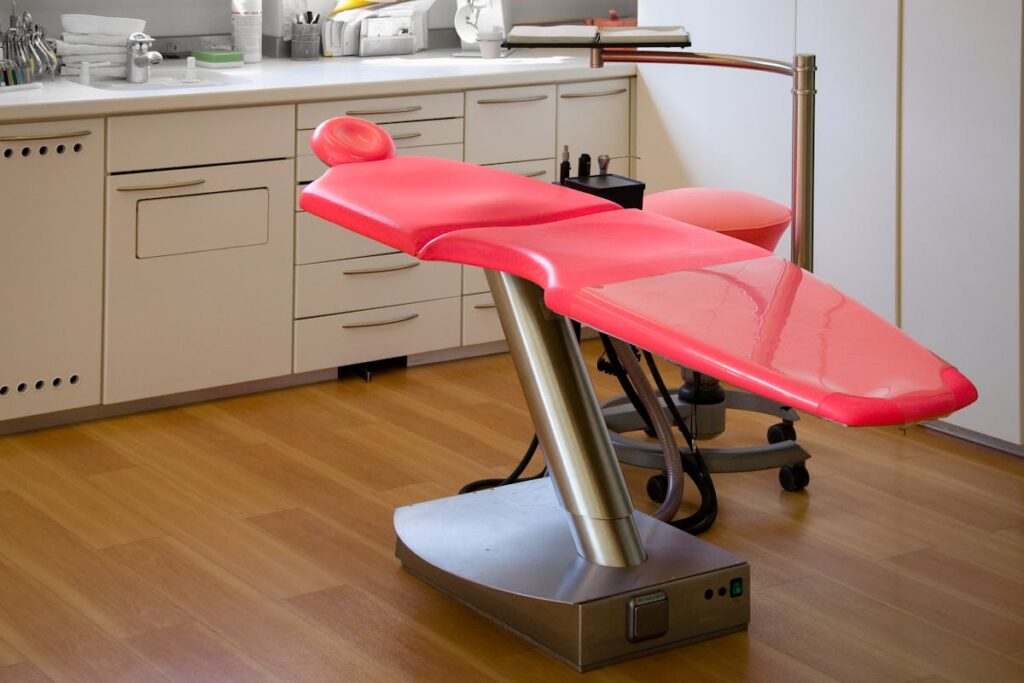
Smart Toothbrush Innovations
Smart toothbrush innovations, pivotal in enhancing oral hygiene, optimize brushing habits via features like pressure sensors, timers, and real-time mobile app guidance. Battery life, a crucial element, supports consistent, convenient use. Manufacturers focus on energy-efficient models for prolonged use on a single charge. Smart toothbrushes also offer aesthetic personalization with color variety, blending advanced functionality with customizable aesthetics for an engaging, effective oral care experience.
Augmented Reality in Orthodontics
Augmented reality (AR) is transforming orthodontics by improving patient engagement, treatment accuracy, education, and clinical efficiency.
- Patient Engagement Enhancement: AR applications provide real-time visualization of potential treatment outcomes, fostering patient understanding and engagement. This assists in managing expectations and elevating patient satisfaction.
- Treatment Precision Augmentation: AR allows orthodontists to overlay desired outcomes on a patient’s current dental state during the consultation, enabling accurate planning and effective treatment strategies.
- Education through Interactive Simulations: AR offers immersive educational simulations for patients and dental students, demonstrating complex procedures or treatment progression, thereby improving comprehension and retention.
- Clinical Efficiency Boost: Integration of AR in orthodontic practices enhances procedure efficiency, shortening adjustment time and increasing clinic throughput.
Digital Impressions and Scans
Digital impressions and scans have revolutionized dental technology by ensuring high-precision capture of oral structures. They enhance the accuracy and efficiency of diagnosis and procedures in various dental treatments like orthodontics, restorative dentistry, and implant planning. The transformation is attributable to improved scanning accuracy of digital impressions, which records dental anatomy details with minimal error, optimizing dental intervention outcomes.
Digital impressions and scans also augment patient comfort during diagnosis. Unlike traditional methods that use bulky trays filled with alginate or silicone, digital scanning utilizes compact intraoral scanners. These swiftly capture detailed oral cavity images without invasive physical impressions, enhancing patient experience and encouraging cooperation. This leads to effective treatment planning and execution.
Nanotechnology in Dentistry
Nanotechnology revolutionizes dentistry by enhancing oral health care through nanoparticles, targeted drug delivery, and advanced dental implant materials. It increases treatment efficacy, reduces recovery time, and extends restoration longevity. This field offers minimally invasive, precise solutions for various dental issues by leveraging nanoscale material properties.
Nanoparticles for Tooth Repair
Nanoparticles, utilized in dentistry, revolutionize tooth repair through precision and minimal invasiveness. The process includes nanoparticle synthesis mimicking tooth enamel’s natural elements, enamel regeneration for minor crack repair, precision delivery targeting damaged areas, and minimally invasive methods enhancing patient comfort and reducing recovery time. This approach amplifies teeth’s structural integrity, promising future dental restorations that are more durable, aesthetically pleasing, and in harmony with the body’s natural processes.
Targeted Drug Delivery Systems
Nanotechnology-enabled targeted drug delivery systems enhance dental treatment. Drug encapsulation technology directs therapeutic agents to oral disease sites, optimizing treatment efficacy. The systems’ release mechanisms, responsive to oral environment changes like pH or enzymes, control drug release, reducing overmedication risk. Nanotechnology’s integration in dentistry advances personalized care, promising patient-specific treatments.
Improved Dental Implant Materials
Nanotechnology advances dental implant materials by enhancing bio integration, minimizing allergies, increasing durability, and improving aesthetics. It creates surface textures for better bone-implant integration, increasing implant stability and longevity. Hypoallergenic materials reduce allergy risks, while nanocomposite materials offer superior durability. Finally, nanotech produces materials mimicking natural teeth, enhancing aesthetic outcomes.
Robotic Dental Surgery
Robotic dental surgery, an advanced dental care method, utilizes cutting-edge technology for high precision and less recovery time. It employs robotic arms for complex procedures, minimizing errors and invasiveness. Through robotics, operational efficiency and patient safety in dental surgery have improved. Enhanced precision results in less tissue damage, faster healing, and reduced post-operative discomfort. Crucially, it allows healthy tissue preservation in intricate procedures like implant placements or bone grafts. Robotic dental surgery has also shortened procedure durations, improving patient comfort. This technological advancement optimizes patient experience and boosts dental professionals’ capabilities, signifying a crucial evolution in dental care.
Biocompatible Materials for Fillings
Biocompatible materials in dental restoration signify a critical advancement in patient care and treatment sustainability. This progress not only expands dentists’ and patients’ options but also caters to the increasing demand for treatments that promote long-term health and comfort.
These materials reflect a complex understanding of the interaction between dental solutions and the human body, emphasizing:
- Material Longevity: Biocompatible materials are long-lasting, reducing the need for frequent replacements, thereby minimizing the impact on the patient’s dental health and financial resources.
- Reduced Toxicity: Selected for their non-toxic properties, these materials prevent exposure to harmful substances, avoiding potential adverse reactions over time.
- Allergy Testing: Allergy testing can be performed before applying these materials, drastically reducing the risk of allergic reactions and providing personalized dental care.
- Environmental Impact: The sustainability of biocompatible materials reduces the environmental footprint, aligning dental practices with eco-friendly considerations.
This transition to biocompatible materials for fillings emphasizes a commitment to advancements that prioritize patient well-being, material longevity, and a comprehensive approach to dental health.
Virtual Reality for Patient Education
Virtual reality (VR) is transforming patient education in the dental industry. By simulating dental procedures in a controlled virtual environment, VR enhances patient understanding of their treatment plans, reducing anxiety and improving comfort. This immersive learning method, transcending simple visualization, offers detailed procedure walkthroughs, aiding comprehension of complex procedures. Consequently, patients are empowered to make informed dental care decisions.
Frequently Asked Questions
How Do Advancements in Dental Technology Impact the Affordability of Dental Care for Patients?
Dental technology advancements, via insurance integration and global accessibility enhancement, significantly reduce dental care costs. These improvements optimize procedures, expanding access to quality dental services.
What Are the Ethical Considerations Surrounding the Use of AI and Robotics in Dental Treatments and Patient Privacy?
AI and robotics use in dental treatments poses ethical queries concerning patient privacy and global accessibility. Proper analysis is needed to guarantee privacy and equal tech access.
How Do These Technological Advancements Address the Environmental Impact of Dental Practices and Products?
Technological advancements in dentistry reduce environmental impact through green material use and waste minimization. These innovations represent the industry’s sustainable commitment, indicating progressive thinking.
What Is the Role of Patient Feedback in the Development and Improvement of These New Dental Technologies?
Patient feedback refines dental technologies, vital for user satisfaction. This iterative process augments device efficacy and usability, enhancing patient care outcomes.
How Are Dental Professionals Being Trained to Adapt to These Rapidly Evolving Technologies, and What Challenges Do They Face in This Learning Process?
“Dental professionals adapt to new technologies via advanced training, balancing theory and practice. Challenges include mastering digital literacy within innovative dental procedures.”
